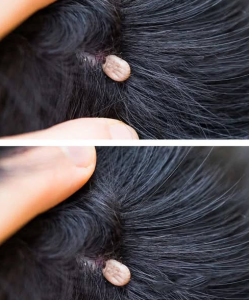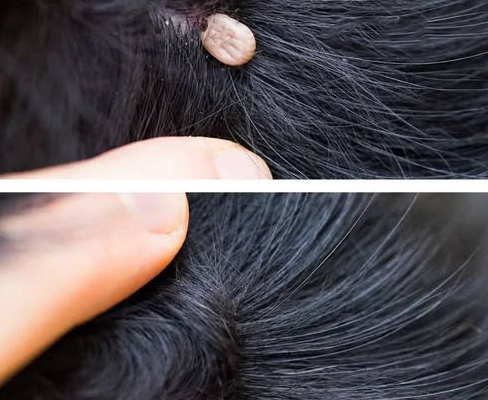Just Discovered This in My Son’s Hair—What Is It? Should We Go to the Doctor?
Discovering something unusual in your child’s hair can be alarming. Whether it’s a strange bump, a moving speck, or a patch of irritation, your mind races with possibilities—from harmless to serious. If you’ve just found something in your son’s hair and aren’t sure what it is, this guide will walk you through the most common causes, what to look for, and when it’s time to seek medical help.
Step 1: Stay Calm and Observe
Before jumping to conclusions, take a deep breath and observe carefully. Children often pick up things in their hair—crumbs, lint, even tiny insects—especially after playing outside or rolling around indoors. The key is to assess calmly and systematically.
Ask yourself:
- Is it moving?
- Is it attached to the scalp or hair shaft?
- Is there redness, swelling, or pain?
- Has your child complained about itching or discomfort?
Use a flashlight and a fine-toothed comb to get a closer look. If possible, take a photo for reference.
Step 2: Common Possibilities
Here are the most frequent culprits behind strange findings in children’s hair:
🕷️ 1. Head Lice
- Appearance: Tiny grayish-white insects and oval eggs (nits) glued to hair shafts.
- Symptoms: Intense itching, especially behind ears and at the nape of the neck.
- Action: Over-the-counter lice treatments are available, but a doctor can confirm and prescribe stronger options if needed.
🐜 2. Fleas or Mites
- Appearance: Small, dark, fast-moving specks.
- Symptoms: Itchy scalp, possible bites or red bumps.
- Action: If you have pets, check them too. A doctor can help identify the species and recommend treatment.
🌿 3. Plant Debris or Dirt
- Appearance: Twigs, seeds, or sticky residue from outdoor play.
- Symptoms: Usually none unless it causes irritation.
- Action: Wash hair thoroughly. If irritation persists, consult a doctor.
🦠 4. Scalp Infection (Ringworm)
- Appearance: Circular patches of hair loss with scaling or redness.
- Symptoms: Itching, tenderness, possible oozing.
- Action: Requires antifungal treatment prescribed by a doctor.
🩹 5. Scabs or Crusts
- Appearance: Dry, yellowish or reddish crusts on the scalp.
- Symptoms: May be itchy or painful.
- Action: Could be from scratching, eczema, or impetigo. A doctor can determine the cause.
🧬 6. Skin Tags or Cysts
- Appearance: Small, flesh-colored bumps or lumps under the hair.
- Symptoms: Usually painless unless infected.
- Action: Monitor for changes. If it grows, hurts, or leaks fluid, see a doctor.
🐛 7. Larvae or Parasites (Rare)
- Appearance: Tiny worm-like movement or embedded bumps.
- Symptoms: Pain, swelling, or visible movement.
- Action: Immediate medical attention is needed. These are rare but serious.
Step 3: Ask Your Child
Children may not always mention discomfort unless prompted. Ask:
- “Does your head feel itchy or sore?”
- “Have you noticed anything weird in your hair?”
- “Did you play somewhere unusual today?”
Sometimes, the mystery is solved with a simple answer: “Oh, I put glue in my hair,” or “I rolled in the grass.”
Step 4: When to See a Doctor
Here are signs that warrant a visit to the doctor:
- Persistent itching or pain
- Swelling, redness, or pus
- Fever or fatigue
- Hair loss in patches
- Movement under the skin or scalp
- You’re unsure and the issue doesn’t resolve in 24–48 hours
Doctors can perform a scalp exam, skin scraping, or even a biopsy if needed. Pediatricians and dermatologists are best equipped to handle scalp and hair concerns.
Step 5: What to Do at Home
While waiting for medical advice, here are safe steps you can take:
- Clean the area: Use mild shampoo and warm water. Avoid harsh chemicals.
- Avoid scratching: Trim nails and discourage picking.
- Monitor changes: Take daily photos if the spot evolves.
- Isolate if contagious: If lice or ringworm is suspected, avoid sharing combs, hats, or pillows.
Step 6: Prevention Tips
To avoid future surprises in your child’s hair:
- Teach regular hair washing and scalp hygiene
- Check hair weekly, especially after outdoor play
- Keep pets treated for fleas and ticks
- Discourage sharing personal items at school
- Use protective hats when playing in wooded or grassy areas
Step 7: Emotional Support
Children may feel embarrassed or scared if something unusual is found in their hair. Reassure them:
- “It’s okay—lots of kids get this.”
- “We’ll figure it out together.”
- “You’re not in trouble, and it’s not your fault.”
Your calm response sets the tone for how they’ll handle future health concerns.
Final Thoughts
Finding something strange in your child’s hair can be unsettling, but most causes are treatable and temporary. The key is to observe carefully, act calmly, and seek help when needed. Whether it’s lice, a harmless bump, or something more serious, you’re not alone—and your instincts as a parent are powerful.


